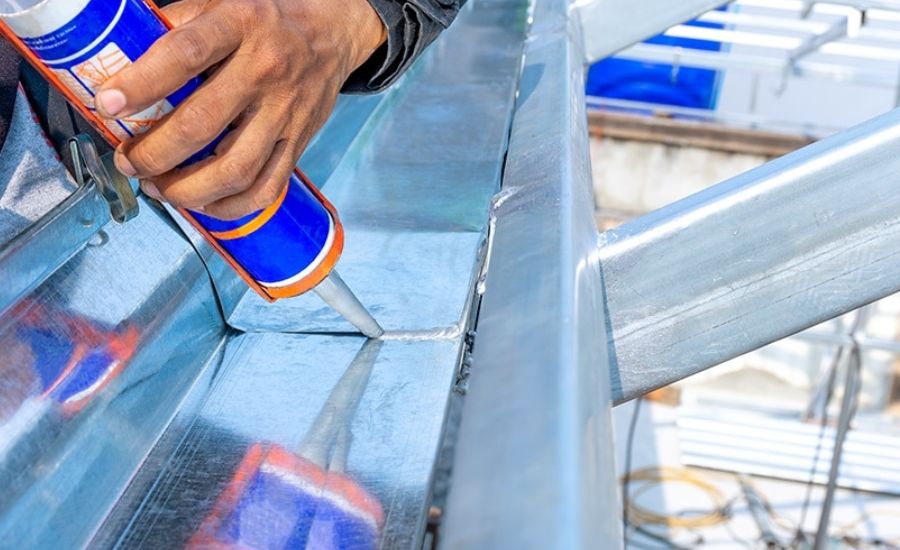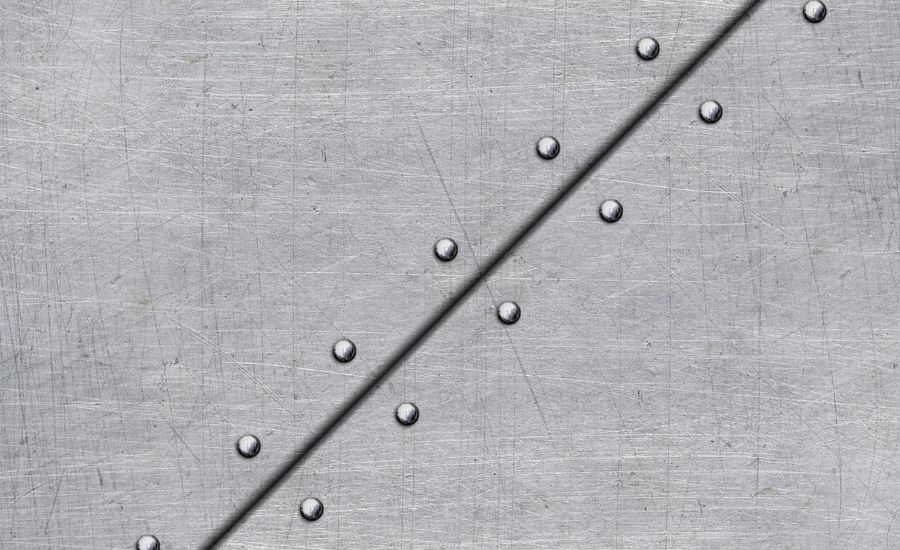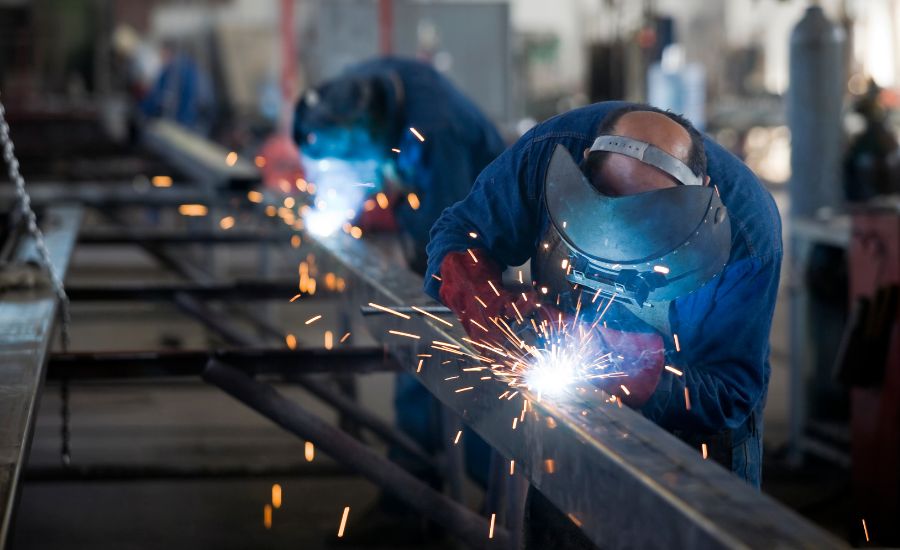There are some real alternatives to welding, but alternate methods would depend on your purpose, what you’re building, what problems you already encountered, and what kind of metallurgical bond you want.
In conventional fusion weldings, for example, stick welding or MIG welding, base metal melts. It means, if by joining two metals you need to keep their properties, you should find alternative methods without welding.

Contents
The heat can destroy my materials. What can I use instead of welding?
There are several alternatives. Join metals with glue usually don’t provide any heat at all and would be recommended for all temperature-sensitive materials.
Bonding the metals with glue
The process. You need to put some amount of adhesive on two metals and hold them together for the exact time.
Conditions. The method is appropriate for gluing most metals, including iron, steel, aluminum, copper, brass, and pewter.
The surface area of the joint should be at least 1-2 mm thick.
If less, you will need structural support for the joint.
In the working process, it’s better to wear gloves and glasses to protect your eyes and hands.
The equipment. The method normally doesn’t demand any machinery, but slick surfaces of metal usually resist any household tubes of glue, so specific metal adhesives are required.
There are three main groups of them: Epoxy (a two-part adhesive that combines hardener and resin), Polyurethane (this glue is a great choice for outdoor applications because it is UV and water-resistant),and Cyanoacrylate (provides fast but efficient effects).
The top three prominent brands are J-B Weld 8271 KwikWeld Professional Size, 3M Marine Adhesive Sealant Fast Cure, and Loctite Super Glue Ultra Gel Control.

What to do?
The process usually takes three main steps:
- A surface preparation. Here Epoxy is the most difficult among other glues. Usually, for Epoxy, you should use coarse abrasives to grit metal surfaces.
- Joining pieces. There can be different amounts of products, some glues are put on just one surface, while others are put on both.
- Waiting for drying and a complete cure. Polyurethane is the most demanding at this point.For those adhesives, initial drying can take a few hours, but some construction polyurethanes take up to two weeks to fully cure. Cyanoacrylate is the fastest – drying takes from 2-3 seconds to 5 minutes, depending on the substance.
For more precise recommendations read carefully manufacturer’s instructions. All procedures very much depend on the type of glue and metal.
How to weld without welding?
Brazing and soldering are liquid-solid phase bonding processes.
Liquid means that the filler metal is melted, and solid means that the base material or materials are not melted.
Two or more metals can be joined together this way.
The difference between soldering and brazing is the temperature. Soldering takes place at a temperature below 840 °F, and brazing temperature ranges from approximately 800° F to 2000° F.
As opposed to arc welding, where temperatures reach roughly 10,000 °F, brazing and soldering are safe for adjoining metals, they do not involve melting the work pieces.
Brazing
The process. Inthe brazing, the processofjoining metals is carried out by filler metal, which melting point is lower than base metals.
Two or more metal surfaces come together by molten filler metal, which flows into the joint.
Conditions. Brazing is a joining process that can only be used on certain metals. The metals must have a low melting point and be able to wet the filler metal.
Some of the best brazing metals include copper, copper alloys, aluminum, stainless steel, cast iron, magnesium, and silver.
Brazing can be appliedforjoining lightweight metals.
But we can’t use brazing for metal sheets, because they demand large joints and it is impossible to create a large pool of molten filler metal.
The equipment. A hand-held torch is the most common tool to braze small pieces in low-volume production.
Popular filler alloys are silver, copper, and aluminum (in a stick or paste). Also required flux and joint cleaners.

What to do?
Follow themain steps:
- Chose appropriate filler material considering yourmetal pieces.
- Clean each joined metal and remove contaminants. Emery cloth or wire brush would help in this case. It’s also essential to eliminate oil and grease using degreasing solvents.
- And very important to get rid of oxide or scale, which can be on the surfaces. For this purpose, you can use an acid pickle, but check in advance that the chemicals are compatible with the base metals. For mechanical removal apply abrasive cleaning. When the parts are absolutely clean, flux and braze them immediately.
- Flux the parts to preventoxide formation on metal surfaces. Brush flux on the surfaces or dip metal parts in it. To measure flux can be used an applicator gun.
- Join pieces for brazing. When you finished cleaning and fluxing, hold metals in position for brazing.
- Braze the assembly. Heat your adjoining metals to a brazing temperature and add the filler metal. Attentively hold the rod or wire against the joint area. Be certain that the filler metal is heated evenly by the torch. The filler starts melting very fast and drawing throughout the joint area.
- Clean the joint after brazing. Firstly, remove the flux remains, because most brazing fluxes are corrosive. Next, eliminate the oxide scale using an acid pickle.
Soldering
The process. The solderingprocess follows the same principles as brazing, but it uses a lower temperature – below 840 °F.
Two pieces of metal form astrong bond without welding with help of filler material, called solder.
The solder is melting and gluing base metal pieces during the metal-solvent action.
Conditions. Soldering is very effective when it is done for brass, copper, or tin, but with iron, stainless steel, or aluminum, soldering doesn’t prove to be useful.
The equipment. A soldering iron, propane torch, or gun is required along with a filler material – mainly tin or lead.
What to do?
Remove surface oxides using flux. Fluxes consist of natural or synthetic rosins, and sometimes chemical additives called activators.
Connect the two pieces in the way you want them to be joined.
Before the solder is applied, heat the surface of two pieces of metal above the solder melting point.
Apply solder, let it melt and flow and provide a smooth, even surface above the metal pieces. Try to escape excess solder, don’t put too much tin.
For good solder joint strength, parts being soldered must be held in place until the solder solidifies.
Now we should clean the joint. Wait for one hour after soldering, and then removed the flux residue as soon as possible.
Don’t need leakproof joints? Use mechanical fasteners
If the joints in your construction don’t require impermeability, you can use the oldest joining metals methods – Riveting, Swaging, or applying other mechanical fasteners like, for example, bolts and nuts.
Riveting metals at home
The process. Riveting is the process of joining metal pieces together by using a mechanical connection with mechanical fasteners, called rivets.
Conditions. This way of metal connectionwithout welding very often employs to join sheet metal parts. Riveting is mostly used on flat surfaces, and after riveting metal sheets form a strong joint, capable of supporting shear loads.
Metals for riveting are stainless steel, copper, brass, and aluminum.
The equipment. Rivet guns, many types of POP rivets.

What to do?
Here are the main steps:
- Join metal pieces and held them strongly.
- Install a rivet. The more exact process very much depends on the type of metal and riveting equipment. You need to drill a hole in the joining metal surface or just punch the rivet, using pressure from a rivet gun.
- Flatten a rivet’s tail to prevent the removal of the rivet. Usually, a rivet gun does it automatically.
Wrapping up
If for some reason you can’t use conventional welding for joining metals, there are somealternatives.
Assembling metals with glue can help when metals and other materials might be ruined by the high temperature.
Mechanical fasteners will be the most appropriate method for bonding big sheets.
The brazing processand solderingare perfect ways when you can use heat but metals are too fragile and won’t survive extremely high temperatures from welding.
FAQs
Consider the most interesting questions that I received on this topic.
How do you fix metal without welding?
It’s possible to repair metal pieces without welding. If the holes are small you can use special epoxy or tape products.
Plug holes with epoxy and then put a layer of primer to protect the metal surface.
Duct tape or aluminum tape is also a good solution particularly to fix auto body damage, they are quite popular in the automotive industry.
For stronger and more permanent results use UV repair patches for metal. They are very versatile and easy to apply for instant metal repair.
What is better than welding?
It depends on the exact situation, your goals, and your conditions. There is no complete favorite. Some methods can be useful in one situation and others in another one.
Learn More: Understanding the Different Types of Welding


